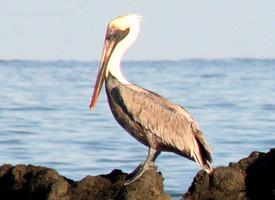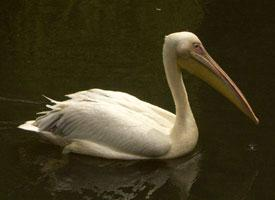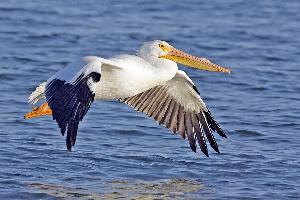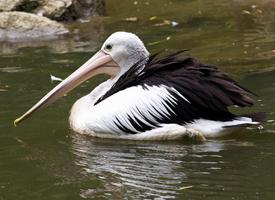
Súlyok és méretek
| Hossz | 105-tól 152-ig cm |
|---|---|
| Súly | 3,5-tól 8-ig kg |
| Szárnyfesztávolság | 203-tól 228-ig cm |
Biológiai adatok
| Élettartam | 15-tól 25-ig éves |
|---|
Állatleírás
The Brown Pelican (Pelecanus occidentalis) is a remarkable bird, easily recognizable by its distinctive features and behaviors, playing a significant role in the ecosystems it inhabits. As a member of the pelican family, it showcases the group's characteristic long bill equipped with a large throat pouch used for catching fish, its primary food source. This species is primarily found along the coastlines from the southeastern United States down through the Amazon River in South America, inhabiting both saltwater and freshwater environments, including estuaries, mangrove swamps, and shallow coastal waters.Adult Brown Pelicans are large birds with a body length ranging from about 106 to 137 cm (42 to 54 inches) and a wingspan that can extend up to 2.5 meters (8.2 feet), making them a formidable presence in their habitats. They possess a mostly grayish-brown body, with a lighter, almost white head and neck during the breeding season. Their eyes are surrounded by a stark, dark patch, which contrasts with their light head, and their long bill is grayish, tipped with a yellowish hue. One of the most striking seasonal changes is the transformation of the back of the neck, which turns dark during the breeding season.
The Brown Pelican is unique among the world's seven species of pelicans for several reasons. Unlike its relatives, which typically scoop up fish while swimming, the Brown Pelican employs a spectacular hunting method: it dives head-first from as high as 20 meters (65 feet) above the water, plunging into the sea to snatch up fish within its bill pouch. After capturing its prey, the pelican surfaces and drains the water from its pouch before swallowing the fish whole. This plunge-diving technique is a breathtaking sight and underscores the bird's adaptation to its coastal environment.
Social creatures, Brown Pelicans are often seen flying in long, single-file lines close to the surface of the water, or resting in groups on beaches, docks, and piers. They breed in large colonies, with nests constructed on the ground, in bushes, or in the lower branches of trees. These nests are made from sticks, grass, and feathers. The female typically lays 2 to 3 eggs, with both parents sharing incubation duties over a period of about a month.
The conservation status of the Brown Pelican has seen significant fluctuations over the years. In the mid-20th century, the species faced severe threats from pesticide pollution, particularly DDT, which led to eggshell thinning and widespread reproductive failure. Thanks to legal protections and the banning of DDT in the United States, the Brown Pelican made a remarkable recovery and was removed from the Endangered Species List in 2009. However, it continues to face challenges from habitat loss, climate change, and occasional oil spills, which can severely impact its food supply and nesting sites.
In many cultures, the Brown Pelican is seen as a symbol of resilience and environmental conservation success, a testament to what can be achieved through dedicated conservation efforts. Its presence along coastlines serves as a reminder of the interconnectedness of our ecosystems and the importance of protecting the natural world.
Hasonló állatok
Új állatfotók
Top 10 állat
- Dolphin gull (Leucophaeus scoresbii)
- Diana monkey (Cercopithecus diana)
- Japanese macaque (Macaca fuscata)
- Galápagos tortoise (Geochelone nigra complex)
- Stone loach (Barbatula barbatula)
- Moustached guenon (Cercopithecus cephus)
- Russian tortoise (Testudo horsfieldii)
- Common house mosquito (Culex pipiens)
- Japanese spider crab (Macrocheira kaempferi)
- Giant peacock moth (Saturnia pyri)


